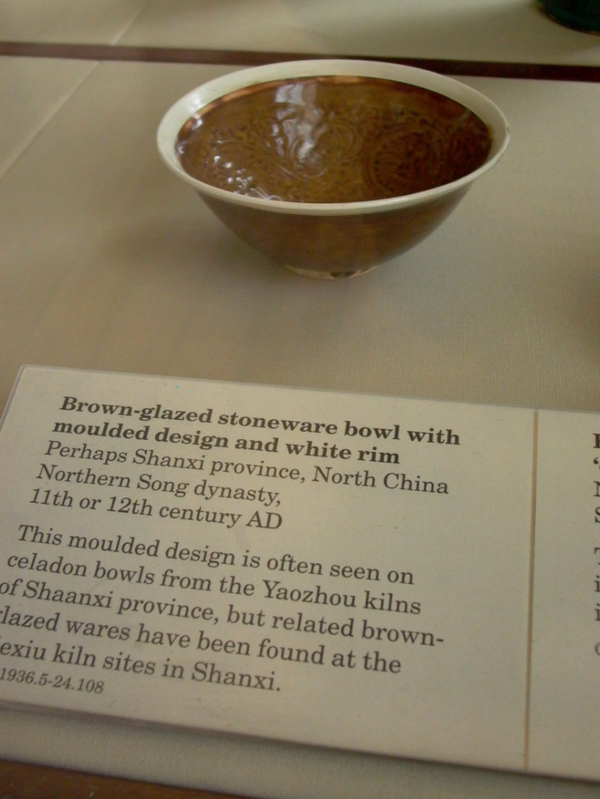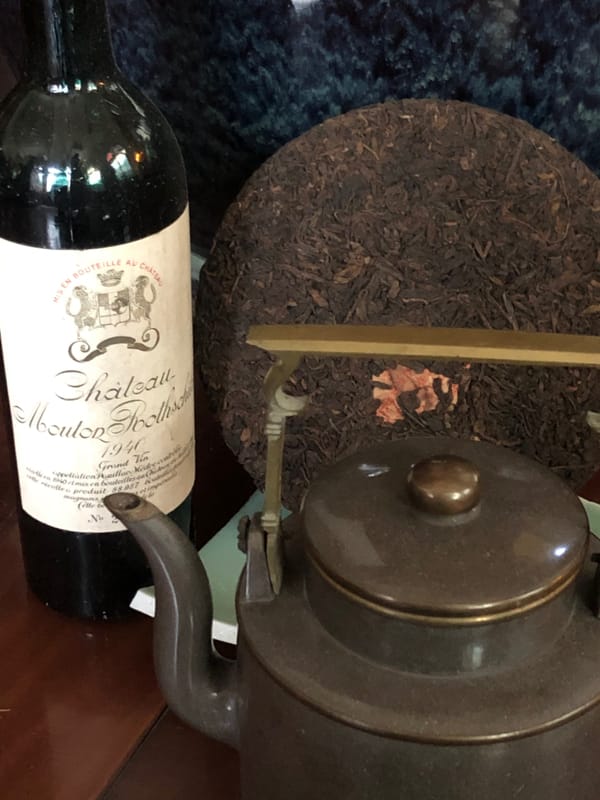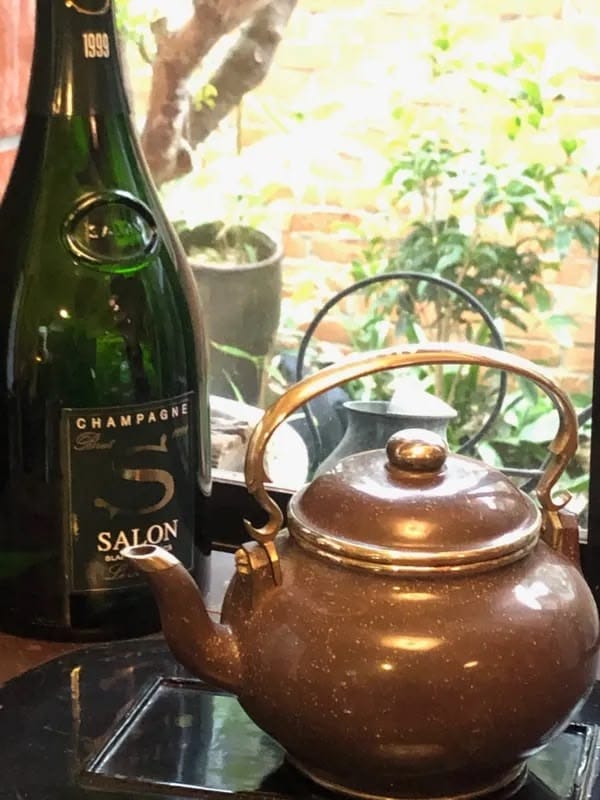Have you ever noticed how the same tea tastes different when sipped from different cups? At first, you might chalk it up to imagination. But in truth, the difference lies in a subtle detail often overlooked—the clay body, or tái tǔ (胎土), of the teacup.
Not long ago, a friend brought back a fine tea from Fujian and invited me to taste it. He first brewed it in a white porcelain cup. The aroma was pleasant, but the flavor felt a bit thin. Smiling, he brewed the same tea again—this time in a Yixing zisha cup. Surprisingly, the tea became noticeably richer, the bitterness softened, and the aftertaste lingered. That was the moment I truly understood the transformative power of teaware materials.
Today, let's delve into the world of clay bodies and discover how these seemingly silent vessels shape our sensory experience of tea.
Why the Clay Body Matters
For tea lovers seeking a deeper cultural experience, understanding how different clay bodies influence flavor is both a fascinating and challenging journey. But it’s not always straightforward, for three main reasons:
- A steep learning curve: Clay bodies involve ceramic science and kiln techniques—topics that can feel too technical for the casual tea drinker.
- Hard to describe: We can sense the difference between cups, yet often struggle to put the experience into words.
- Overwhelming choices: With so many styles of teaware available, it’s hard to know what to choose or where to start.
Traditionally, much attention has been given to tea leaves, but not enough to the vessels that hold them. Many people choose cups based on appearance alone, overlooking how the material itself can subtly—but powerfully—affect the taste. As one old tea master once said, “Pairing fine tea with the wrong cup is like cooking gourmet food in the wrong pot—it loses its true flavor.”
The Personality of Clay: A Material Story
The clay body of a teacup is more than its physical base—it's the soul of the vessel. It determines not only the cup’s texture and heat retention, but also its interaction with aroma and flavor. Let’s explore some of the most common types.
White Porcelain: The Neutral Interpreter
Made primarily from high-quality kaolin and fired at high temperatures, white porcelain produces a dense, pure white body with a smooth finish and a clear, ringing sound when tapped.
White porcelain is prized for its neutrality—it doesn't interfere with the tea’s character, allowing the original aroma and flavor to shine through. That’s why it’s the standard for professional tea evaluations.
But its neutrality is a double-edged sword. Its smooth surface dissipates heat quickly, making it less ideal for teas that require sustained warmth, like aged oolongs or pu-erh. It also does little to soften bitterness or astringency in the brew.
Yixing Zisha: The Harmonizer
Zisha, or purple clay, is unique to Yixing in Jiangsu province. Rich in minerals and naturally porous, zisha allows the teacup to “breathe.”
A friend who has collected zisha cups for years told me, “Zisha makes tea taste more harmonious.” And it’s not just folklore. The micro-pores in zisha can absorb harsh compounds like tannins, making the tea smoother and rounder on the palate.
Still, zisha isn't perfect. It can dull the delicate aromas of light green teas, and it requires careful maintenance over time—a potential hurdle for beginners.
Jian Ware Black Glaze: The Guardian of Warmth
Jian ware teacups, originating from Jianyang in Fujian province, were beloved by Song dynasty scholars. Made from iron-rich clay and finished with dark, lustrous glazes, they often feature dramatic kiln effects like “hare’s fur” or “oil spots.”
Their strength lies in heat retention. In my own tests, tea in a Jian cup stayed warm almost twice as long as in a white porcelain cup. This makes them ideal for teas that reveal their character at higher temperatures, such as aged pu-erh or heavily oxidized oolongs.
The dark glaze also visually enhances the tea's color, making it appear more vibrant. However, Jian cups tend to be heavier and may not appeal to those who prefer a more delicate feel.
Celadon: The Gentle Poet
Celadon has a long history in China, dating back to the Eastern Han dynasty. The most renowned comes from Longquan, known for its serene, jade-like green hue achieved through iron-rich clay and reduction firing.
Celadon strikes a balance between density and porosity, offering a unique affinity with aroma. I particularly enjoy using celadon for lightly oxidized oolongs—its subtle personality seems to amplify floral notes and sustain the fragrance gently over time.
Its downsides include moderate heat retention and less ability to mellow bitterness compared to zisha.
A Scientific Look: How Clay Influences Flavor
From a scientific perspective, clay bodies affect tea through three main mechanisms:
Porosity and Absorption
Different clays have varying degrees of porosity, which influences how much they interact with flavor compounds in tea.
Take tannins, for instance—the compounds that create bitterness. Zisha’s pores absorb some of these, resulting in a smoother taste. Dense white porcelain, by contrast, absorbs almost nothing, leaving any bitterness fully intact.
One potter even examined used zisha teapots under a microscope and found tea residue embedded in the micro-pores—a clear sign that zisha “remembers” the tea, not by myth, but by science.
Heat Transfer and Aroma Release
The thermal properties of clay affect how quickly tea cools, which in turn affects aroma and taste expression.
A thinner porcelain cup cools tea faster, releasing light, volatile aromas quickly—ideal for green or floral teas. A thicker, heavier clay like Jian ware keeps tea hot longer, helping deeper flavors develop over time.
In one test, tea cooled by 12°C in a porcelain cup over five minutes, but only by 7°C in a Jian cup. That small difference can significantly alter how aromas evolve in the nose and on the palate.
Texture and Sensory Suggestion
Never underestimate how a cup feels in your hand. The texture and weight of a cup can subtly influence how we perceive taste.
Studies show that our brain’s sensory systems are intertwined. A heavy cup can make tea feel richer. A soft, smooth surface may lead us to interpret the tea as gentler or rounder.
This is why two cups of the same tea can taste different—not due to superstition, but because of real, cross-modal perception at work in your brain.
Perfect Pairings: Matching Tea and Clay
Knowing the strengths of different clay bodies lets us thoughtfully pair them with specific types of tea. Here are some tried-and-true combinations:
Green Tea & White Porcelain: A Pure Encounter
Green tea is all about freshness and clarity. White porcelain showcases its color and fragrance without interference.
Best for: Longjing, Biluochun, Huangshan Maofeng.
Tip: Choose thin-walled cups with a wide opening to help the aroma rise and highlight the tea's pale hue.
Oolong Tea & Celadon: A Harmonious Resonance
Celadon’s subtle warmth and slight absorbency bring out the layered complexity of oolong teas.
Best for: Tieguanyin, Dong Ding, and other light to medium oolongs.
Tip: Opt for celadon with soft glaze tones and a round shape to mirror the tea’s fluid charm.
Black Tea & Zisha: A Rich Conversation
Black tea’s bold flavors and slight bitterness mellow beautifully in zisha. The clay body enhances depth while smoothing rough edges.
Best for: Keemun, Dianhong, Assam.
Tip: Look for darker purple zisha for visual harmony with black tea. Simple shapes let the flavor shine.
Pu-erh & Jian Ware: A Deep Dialogue
Aged or fermented pu-erh pairs naturally with Jian ware’s excellent heat retention and grounding weight.
Best for: Aged raw pu-erh, ripe pu-erh.
Tip: Choose cups with kiln effects like “oil spots” for visual depth, and opt for sturdy, upright forms to echo pu-erh’s gravitas.
Starting Your Own Clay Journey
You don’t need to be a ceramicist or tea master to explore the world of clay. Here’s how to begin:
Start with Three Basic Cups
Buy a white porcelain, a zisha, and a celadon cup of similar size and shape. No need to splurge—many affordable, handmade cups offer excellent performance for comparison.
Try a “One Tea, Three Cups” Test
Pick a familiar tea and brew it identically in all three cups. Control every variable—tea weight, water temperature, steeping time—except the cup. Then taste them side by side and note the differences:
- Color of the tea
- Strength and longevity of aroma
- First impression on the tongue
- Bitterness and aftertaste
Keep Notes and Share Observations
Write down what you notice. No need for technical jargon—use your own words. Try phrases like “clean aroma in porcelain, but faded quickly” or “zisha cup made the taste feel round and soft.” Over time, your notes will become an invaluable personal reference.
Even better, invite friends to try the test with you. Everyone’s senses are different, and sharing can deepen your understanding.
Touching the Warmth of Time
Each clay body has its own spirit, just as every tea has its own rhythm. When the right tea meets the right cup, the harmony created is more than flavor—it’s culture, memory, and presence.
When you cradle a zisha cup, you hold not just clay, but centuries of Yixing craft. When your fingers brush the smooth surface of celadon, you're touching the gentle breath of Longquan’s ancient kilns. When you gaze into the dark depths of a Jian ware cup, you see echoes of the Song dynasty’s quiet elegance.
In our fast-paced world, let us slow down. Let us feel the dialogue between our fingertips and the clay, and taste the warmth of history held in a humble cup.
Next time you raise a cup of tea, take a moment to notice its body—the clay beneath the glaze. In that small, silent space, you may discover that what you’re holding isn’t just a teacup... but a story waiting to unfold.




